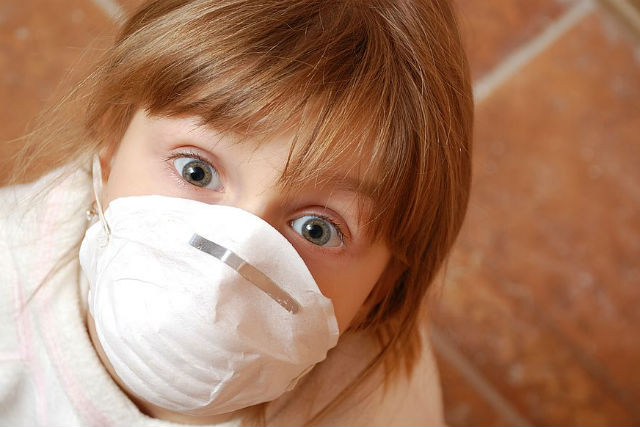Unless you have been living in a cave, you would, no doubt, have heard about the Wuhan coronavirus which has spread rapidly across the world.
Belonging to a family of viruses known as coronavirus, which include Severe Acute Respiratory Syndrome (SARS), and Middle East Respiratory Syndrome (MERS), these viruses affect mostly bats, pigs and small mammals. They mutate easily and can spread from animals to humans, and from one human to another.
Advice from DR. Edwin Ong from DTAP Clinic
In order to find out more about the virus, whether we should be concerned about it and some precautions that we can take to protect ourselves against it, I sought the advice of a medical doctor – DR. Edwin Ong, Family Physician, at DTAP (DR. Tan & Partners) Clinic @ Siglap, Singapore.

DR. Edwin Ong. [Photo: DTAP Clinic]
Outbreak originated from Wuhan, Central China
The Wuhan virus outbreak, according to DR. Ong was originated in December 2019 in Huanan Seafood Wholesale Market in Wuhan, the largest city in central China. Chinese scientists believe that the virus may have jumped from bats to snakes, which were then sold in the market and then transmitted to humans.
Added DR. Ong, “However, some scientists are skeptical of this conclusion. The market has since been shut down and disinfected, which makes it difficult to identify the source animal.”
170 people dead and 8,100 people have been infected
As of 30th January 2020, 170 people have died and more than 8,100 people globally have been infected, with the vast majority in China. There are 16 confirmed cases in Singapore as of 31st January 2020, and to date, there is no local transmission of the virus.
He continued, “Our government has acted swiftly, setting up a multi-ministry task force aimed to tackle and contain the Wuhan virus on all fronts in Singapore. The latest of their efforts include the planned distribution of 5.2 million surgical face masks to all 1.37 million households in Singapore. The government is being vigilant and so should we. The public should continue to stay abreast with the latest updates and news reports on the virus.”
DR. Ong however points out that the actual figures relating to the virus may be far higher than the estimates.
He says, “Firstly, the actual number to have contracted the virus could be far higher, as people with mild symptoms may not have been detected. World Health Organisation (WHO) diseases modelling experts at Imperial College London suggest there could be as many as 100,000 cases with uncertainty putting the margins between 30,000 and 200,000.”
We do not know a lot about the Wuhan virus
As well, because it is a completely new virus, we do not know a lot about it, such as how it spreads or the exact incubation period. 14 days is an estimate based on data that has been gathered so far.
Also added DR. Ong “Another key concern is the range of severity of symptoms. Some people only suffer mild illness while others become severely ill. This makes it more difficult to establish the true numbers infected and the extent of transmission.”
There is no need to panic
With the Wuhan virus outbreak being in the early stages, DR. Ong also points out that we do not yet know the full extent of this outbreak.
Yet he feels that there is still no need to panic. Said the doctor, “The spread of the virus outside China was inevitable due to the high volume of travel into, out of, and through China. The key issues are how transmissible the Wuhan coronavirus is between people and what proportion become severely ill and end up in hospital. Often, viruses that spread easily tend to have a milder impact.”
Extent of contagion of the virus is unclear
And on the spread of the Wuhan virus, DR. Ong adds that the data gathered by the US Centres for Disease Control and Prevention (CDC) is still unclear.
He says, “It is thought that the virus is likely to be spread via respiratory droplets produced by an infected person. Therefore, spread can occur from close contact, that is approximately two metres, with an infected person, over a period of 30 minutes or more.”
Epidemics come and go and we are well-prepared now
But DR. Ong pointed out that epidemics do tend to come and go, citing the SARS example.
He says, “In 2003, SARS was rampant, infecting 8,098 people and causing 774 deaths, but since 2004, no cases of SARS have been reported worldwide. The virus is all but extinct.”
Continued DR. Ong, “Governments and major health organisations have also applied the lessons from past epidemics and are better prepared to deal with this one. So far, it appears that the various measures implemented by most countries are positive steps in hopefully curbing this outbreak.”
We do not need to be alarmed
DR. Ong also added that the Wuhan coronavirus seems to cause less severe illness than SARS, so there is no need to be alarmed.
He added “So far, the fatality rate for the new coronavirus is around 2 – 3% whereas in comparison, the fatality rate for SARS is around 14 – 15%. This figure is likely to increase or decrease with time. Healthy, young individuals tend to make a full recovery while many of the people who have died have underlying conditions such as diabetes and cardiovascular disease.”
Symptoms of the Wuhan virus
The main symptoms of the Wuhan coronavirus are fever, runny nose, cough, sore throat, and breathlessness, basically similar to normal pneumonia.
Completely different to influenza
However, saying that, the Wuhan coronavirus is completely different to influenza, according to DR. Ong, even though some of the symptoms overlap.
DR. Ong explained, “The virus strains are completely different. The Wuhan virus is a coronavirus whereas influenza is caused by the influenza virus. While there is an annual influenza vaccine available, there is no vaccine for the Wuhan virus. This means it is more difficult for vulnerable members of the populations such as elderly people or those with existing respiratory or immune problems, to protect themselves.”
Also continued the doctor, “There are also antiviral medications to treat influenza but there is no specific treatment for the Wuhan virus, yet.”
What preventive measures we can take
So with no treatment available, what preventive measures can we take against the Wuhan virus as we go about our daily lives?
According to DR. Ong, wearing a surgical mask is important if you have flu-like respiratory symptoms.

Photo: Stock_Free_Images
He added, “Even if you have no symptoms, you can still wear a surgical mask for precautions if you are going to be out in public and having person-to-person contact.”
He added that surgical masks will suffice and that there is no need to use N95 masks.
As well, DR. Ong advises to take the same protective measures that you would against the flu: that is, wash your hands frequently with soap, cover your mouth with tissue paper when couching or sneezing and stay away from people who are sick.
DR. Ong also advises everyone to avoid crowded places and avoid contact with people who are unwell or showing symptoms of illness, and see a doctor if you are unwell.
He says, “If you are unwell, wear a mask and call the clinic in advance before going down.”
DR. Ong also stresses that you should avoid contact with live animals including poultry and birds, as well as consumption of raw and undercooked meats.
As well, the physician also reminds everyone to avoid non-essential travel if possible, especially to China.
He added, “Otherwise, when you are travelling, the protective measures are the same as the ones you would take during your daily life.”

Leave a Comment